Mpumalanga - province of South Africa
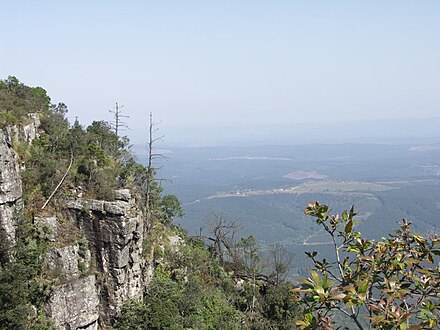 The Mpumalanga Province is located in the north-east of South Africa and is one of the most popular tourist destinations in the country.
The Mpumalanga Province is located in the north-east of South Africa and is one of the most popular tourist destinations in the country.
Regions

- Highveld - From Gauteng to the Escarpment. The Highveld is of great industrial importance to South Africa with coal mining, steel mills, power stations and the Sasol oil-from-coal plants.
- Escarpment - One of the primary tourist destinations in Mpumalanga, the escarpment of the Drakensberg running from the border with Limpopo in the north to Eswatini (Swaziland) in the south, offers dramatic scenery, trout fishing, history and nature in abundance. The escarpment forms a dramatic boundary between the Highveld at around 1800 m above sea level and the Lowveld at around 800 m above sea level.
- Lowveld - Between the Escarpment and Mozambique includes the Kruger National Park and many private game reserves.
Cities
- Mbombela — The provincial capital, and a major stopover point for tourists travelling to Kruger National Park and to Mozambique
- Barberton — With some of the oldest rock formations in the world at around 3.5 billion years.
- Sabie — A popular tourist destination known for its scenery and beautiful waterfalls.
- Witbank — A coal-mining city en route from the Gauteng province to the Kruger National Park, with a casino.
- Hazyview — 44 km from the Skukuza gate to the Kruger National Park, and renowned for its large banana and macadamia nut industries.
- Lydenburg — At the foot of the Long Tom pass, it is the centre of the South African fly-fishing industry.
- Belfast — One of the coldest towns in South Africa, it is renowned for its excellent trout fishing conditions.
- Dullstroom — One of South Africa's premier flyfishing destinations.
- Graskop — On the Paorama Route on edge of the escarpment, close to God's Window viewpoint.
- Malalane — Halfway between Mbombela and Komatipoort at the Malalane Gate Entrance to the Kruger National Park.
- Komatipoort — On the border of South Africa and Mozambique, near the Crocodile Bridge entrance to the Kruger National Park.
- Machadodorp — It has a natural radioactive spring that is reputed to have powerful healing qualities.
Other destinations
- Blyde River Canyon — the third largest canyon in the world, with geological formations.
- Kruger National Park — one of the main attractions of South Africa, it is considered the flagship of South African National Parks
- Songimvelo Game Reserve — a UNESCO World Heritage Site with a landscape of volcanic and sedimentary rock, and home to some of the world's oldest rock art
- Ohrigstad — near the Echo Caves
- Perdekop —
- Schoemanskloof — the Schoemanskloof pass is one of the most beautiful passes in South Africa
- Sabi Sands Game Reserve — a 65,000-ha private game reserve next to the Kruger National Park
Understand
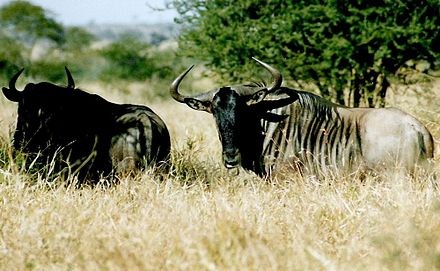
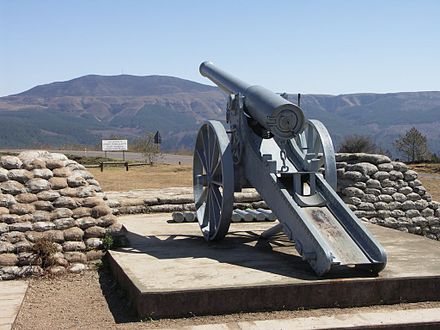 Mpumalanga is a Swazi word, meaning "there where the sun rises".
Mpumalanga is a Swazi word, meaning "there where the sun rises".
Mpumalanga is important for South Africa's economy, especially tourism. Tourist going to the south of the Kruger National Park enter the park here and the National Road to Mozambique also goes through here. It is also the major gateway for tourist going to/coming from Eswatini.
History
Human history in this region starts around 46,000 years ago when red ochre was mined here. San Bushmen later inhabited the area and some of their rock art can still be found today. Some time after the bushman, the area was used by travelers from Asia for mining and trading. Between 1400 and 1700 there was an inflow of people from further north in Africa, notably the Nguni and Ndebele.
In 1836 European settlers arrived in the region and in 1871 the first of a number of gold rushes occurred with the discovery of gold on a farm near Polokwane (then Pietersburg). A number of wars followed between the boers and local tribes, as well as between the boers and Britain.
In 1926 the Kruger National Park was proclaimed and in 1948 a fisheries institute was established in Lydenburg leading to the abundance of trout farms in the area today.
Talk
As with the rest of South Africa, English is commonly used and all you need to travel.
The dominant indigenous language in the region is SiSwati. A few Siswati words you might encounter or would want to use:
- Sawubona - Hello
- Sala kahle - Goodbye
- Angivisisi - I don't understand.
- Ngiyabonga - Thank you.
- Wamukelekile - You're welcome.
Get in
By car
For most tourist destinations in Mpumalanga, follow the N4 toll road from Pretoria. The road is in very good condition. Alternatively, follow the N12 from southern Johannesburg, it will join the N4 at Witbank.
On the N4 between Bronkhorstspruit and Witbank, be on the lookout for an overpass that has thousands of mud swallow's nests build on its underside. It has been a nesting spot for the birds for years and is quite spectacular.
If you are heading to the southern parts of Mpumalanga, follow the N17 from Johannesburg.
By plane
Kruger Mpumalanga Airport has flights to Cape Town, Durban, Johannesburg and Vilanculos. It is situated in the north of Mbombela and 30 minutes to the next Kruger National Park gate.
Get around
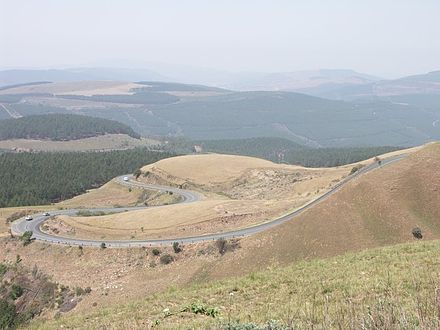
By car
One of the best ways to get around is by rental car. There is a lot to see and do in this area and you might want to change your plans on short notice as you discover new places. Having your own transport gives you the freedom to do this.
By motorbike
Mpumalanga is a biker's dream with scenic winding routes and relatively little traffic. There are many motorbike rental agencies in South Africa, MotoBerlin, ph: +27 (0)11 745-1515 in Johannesburg being one.
See
- The spectacular views from God's Window on the edge of the escarpment.
- The Jane Goodall Chimpanzee Eden (Chimp Eden), Umhloti Nature Reserve (about 16 km from Mbombela along the R40 towards Baberton), +27 13 745-7406, info@janegoodall.co.za. A 1,000-ha game reserve and animal sanctuary for rescued chimpanzees. Tour: R240 per adult, R110 per child (6-12), R180 per pensioner (over 65), child under 6 years free 2021-04-28
Do
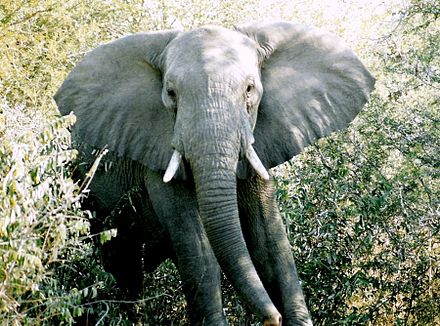
-
Blyde River Canyon. This canyon is the third largest canyon in the world after the Grand Canyon in the USA and the Fish River Canyon in Namibia. A reasonably priced boat trip on the lake is available and well worth doing.
-
Kruger National Park. The Kruger National Park covers over 20,000 km² and is one of the main tourist attractions in South Africa.
-
Pilgrim's Rest, +27 13 768-1211. Pilgrim's Rest is a small historical town restored to what it would have look like during the gold rush era.
-
Sudwala caves, +27 13 733-4152, info@sudwalacaves.co.za. At 240 million years old, these are the oldest known cave system in the world. The largest cave in this system is the P. R. Owen Hall and is 70 m in diameter and 37 m high. There are daily 1-hour tours and a monthly 5-hour tour that takes one up to 2 km into the cave system. Adjacent to the caves is Dinosaur Park with replicas of all the dino favorites.
Eat
- Biltong made of game, like Kudu, Gemsbok or Elephant.
- Kota(Bunny chows)
Drink
Amarula Liquor
Stay safe
Be aware of animals and traffic while driving the passes at night.
Stay healthy
Malaria may occur in the Lowveld regions. Consult a travel clinic or your doctor for the latest information and preventative measures. Also see the Mosquitoes travel topic.
Go next
Related: Mpumalanga Escarpment in a weekend